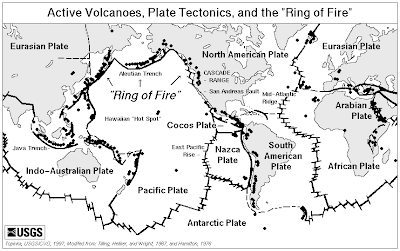Science class is my favorite class in my whole learning experience, so far. Although learning about waves is probably my least favorite unit in science class. Never the less the 7th grade science class curriculum demands that we learn about waves. Since we are at the early beginnings of our waves unit we are learning about water waves, waves that all of us know at least a little bit about. Later on we will be exploring about the 2 other types of waves, light and sound waves.
To give us a little bit of a visual our teacher gave us a small project online. What we had to do is to make observations on how a water droplet affects the water. We had to see how the size of the droplet and how fast the droplets came out affected the water. In other words how the frequency and amplitude interfered with the water below.
Out of generosity(and part of my assignment) I am going to share with you what I observed.
1st observation:
In this picture I have adjusted the frequency to 50% and the amplitude to 100%. The drops are so large because of the amplitude and the frequency of the waves are more spread out because its only at 50%. One thing that you have to know to understand my observation is that the black lines are the waves and the blue is the surrounding water(like an ocean). What I observed is that the lines/waves are very dark because the drop was so large, there was more of an impact making the waves larger. One rule that I made is that the higher the amplitude the darker/larger the waves are. I also noticed that the lines got lighter as they moved forward because when the drop first hits the water it is full of energy but after the wave hits its energy is more spread out over lots of waves.
2nd Observation:
In this test I used 2 sink thingies making 2 different setts of drips. This test is similar to the previous one, same amplitude and frequency, same dark lines and frequency but different set up. This one is very interesting to me because when you think of 2 separate waves clashing you would think( well at least I do) that the wave would get even bigger, there is double the power. But in fact the waves cancelled out which is to me extraordinary. The waves that clash cancel out but the waves that don't, keep going on their merry way until of course they hit a object or they lose all their energy before that.
Observation 3:
What I found cool about this one is that the first set of waves move forward smoothly but then hit the barrier bounce back and hit the other set of waves. This process then keeps going. When the drop first makes impact the waves shoot in all direction the program just doesn't show all the waves. Just to clarify that those checkered dots of black and blue are waves going to the side colliding with other waves going that direction bouncing off the wave. What kind of confused me is that behind the barrier there are ripples. What interests me is how on earth those waves/ripples got there if there is a barrier. Some possibilities are that the waves went under the barrier or maybe the wave bounced off a different from somewhere else and came back behind the barrier or even go through the small cracks in the barrier.
Conclusion: In conclusion a waves size and how many waves there are all depend on the size of the interference. In this case the interference is a water droplet but a interference could go from a boat to a pebble. As much fun as this was I did learn a little bit about how waves work and the main characteristics but in my opinion I think doing this experiment in real life (water, pipet and a bucket) works better because you can see a whole view.
Key Terms
Frequency: How many peaks/crests/waves pass a given point per second (H2) (Waves/second= Hertz)
Amplitude: Height of the wave-The size of the disturbance determines the amplitude of the wave (meter)
Wave Length: The distance between crests or troughs (meter)
Concept
A wave is characterized by the way it moves!




























